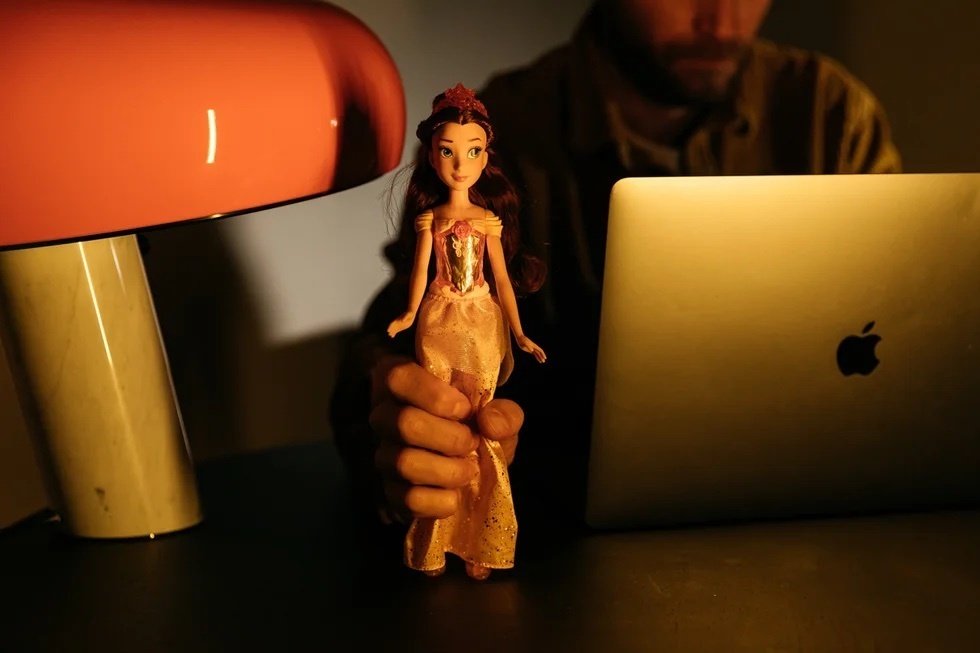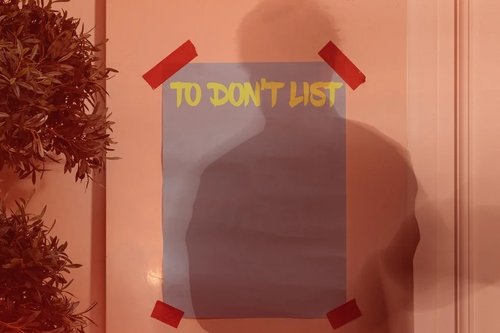Beyond the Barbie box: The reality of pretty privilege in the job market
Jul 17, 2023
10 mins


Freelance journalist and writer
With the release of the new Barbie film right around the corner, and beautiful, pink photos flooding every corner of the internet, the word “pretty” and all its synonyms have been subconsciously filling our minds for weeks. We all know the phrase that beauty is in the eye of the beholder, and it holds true that everyone has a different, subjective vision of what “beautiful” looks like. Yet, evidence suggests that attributes such as able bodies, height, physical fitness, and facial symmetry may often bring greater success. This phenomenon is called “pretty privilege”—and it proves to be very prominent both in the workplace and in the hiring process. Who knows, it may also be the reason Barbie had so many coveted jobs …
To find out what pretty privilege and appearance-based bias actually are, how prevalent both of them are within the world of work, as well as what implications they can have on professionals, we spoke with Simone Quartey, Diversity & Inclusion Consultant who runs her own practice, SQuart Consulting, L.L.C., and Dr. Deidra A. Sorrell, psychologist and licensed professional counselor from Synergy Wellness Therapeutic Services. Dr. Sorrell is also known as The Feisty Therapist on TikTok and Instagram, where she talks about workplace bullying and mental health at work.
Understanding pretty privilege and appearance-based biases
“Pretty privilege” or “appearance-based bias” is an intriguing and pervasive phenomenon that affects many areas of our life. “This concept is considered as an offshoot or colloquialism of lookism, a form of physical attractiveness discrimination, which refers to the advantages individuals perceived as conventionally attractive might have in different areas in their life” explains our expert Simone Quartey.
The concept of pretty privilege and lookism is closely tied to a cognitive bias known as “The Halo Effect.” Coined by psychologist Edward Thorndike in 1920 in his paper “The Constant Error in Psychological Ratings,” the halo effect describes how our overall impression of a person influences our feelings and thoughts about their character—and that attractive individuals are often perceived as smarter, funnier, kinder, and even more athletic than their average-looking counterparts.
Sounds rather platonic, doesn’t it? But think about how many times you labeled something or someone “good” or “bad” just from looking at it/them, oftentimes simply subconsciously. It’s a habit most of us have—we just have to make sure we don’t put these preemptive judgments to practice. “As humans, we are inherently drawn to the categorization of others—but there is a line,” explains Quartey. “It becomes problematic when we begin assigning positive or negative attributes to people based on factors beyond their control—mostly about their appearance—and allowing these judgments to shape our opinions of them.”
Numerous studies have explored the connection between aesthetic and moral judgments - so many that the research has become its own academic discipline called ‘Pulchronomics’.The phenomenon has been looked at in various settings - the selection of scholarship applicants, the judgments of students by teachers, voter preferences for political candidates, and more. Some studies suggest that recognizing good looks and goodwill involves similar brain mechanisms, others give a simple answer that our enjoyment of looking at attractive individuals influences how we perceive their attributes. All of them, however, found that attractive biases in organizational decision-making are rooted in the “what is beautiful is good” stereotype.
“… Attractive professionals could earn up to 15% more than their less-attractive colleagues …”
Pretty privilege in the hiring process
“Pretty privilege and appearance-based bias can be seen in most areas of our life—and they continue being prevalent in the hiring process,” says our expert Dr. Deidra A. Sorrell. “There are a lot of people looking for jobs, in certain areas there are even job shortages, which means that organizations have the means to be picky about who they hire from the very beginning.”
Pretty privilege in hiring itself has been studied extensively. For example, a General Survey conducted by Newsweek revealed that a significant majority of the public, nearly two-thirds (64%), believed that good-looking individuals had it easier to advance in their careers, whether it would be a woman or a man.
Around 63% of respondents said that being attractive gives men an advantage in securing a job and 58% that it contributes to their chances of getting promoted. Similarly, for women, an equal number of people (72%) saw good looks as advantageous for both job acquisition and promotions. The survey found the influence of appearance also extends to hiring managers’ perceptions of their employees and candidates, as 60% of them expressed that wearing “flattering clothes” gives women an edge in the workplace.
Another report done by the Institute of Labor Economics (IZA) found that attractive professionals could earn up to 15% more than their less-attractive colleagues. Additionally, a study published in the Journal of Economic Psychology, which looked at pretty privilege in service jobs, revealed that attractive food servers earned approximately $1,200 more per year in tips compared to less-attractive waiters.
This appearance-based bias is often intertwined with the racialized beauty hierarchy, which traces its roots back to the era of imperialism when the Western beauty standards began promoting the belief that light-skinned individuals are more attractive than their darker-skinned counterparts. Unfortunately, these perceptions continue to have an impact today.
“Pretty privilege tends to represent a white Anglo-Saxon association of tall, blond-haired, blue-eyed individuals who tick off conventional beauty standards and are able-bodied,” highlights Quartey. “This ideal has had a significant impact on hiring decisions, favoring those who come closest to fitting that archetype. Just look at Abercrombie & Fitch, for example.”
Challenging employment standards and biases is a privilege that not everyone can afford. “Most historically marginalized communities have internalized mechanisms influenced by white supremacy, including colorism and specific physical features,” Quartey continues. “Within conventional corporate structures, it’s rare to witness individuals who deviate from this archetype, those who are not able-bodied or possess traits outside the conventional standards. There is a continuous aspiration to align with the white Anglo-Saxon appearance ideal—and we can see it everywhere.”
The bimbo effect at work
While pretty privilege suggests that attractiveness can grant individuals the ability to achieve their desires, it’s important to acknowledge the flip side of such attractiveness-based bias. “The concept of appearance-based bias suggests that ‘pretty’ individuals may easily attract favorable opportunities—but it’s not always like this,” explains Dr. Sorrell. “Those considered attractive can also invite negative experiences, such as bullying or criticism, which are based solely on their appearance.”
Such other side of attractiveness can also be seen in research. For example, in the previously mentioned Newsweek Survey, 10% of respondents claimed to know someone who has faced professional setbacks for being deemed “too good-looking.” This phenomenon is commonly referred to as the bimbo effect or the “beauty penalty,” as described by researchers Rick Wilson and Catherine Eckel.
The bimbo effect essentially describes instances in which good-looking women are seen as “bimbos”, which the Cambridge Dictionary describes as “a young woman considered to be attractive but not intelligent.” This bias tends to be particularly common in male-dominated settings, where women may find themselves working harder to prove their competence.
One notable case that exemplifies the bimbo effect is the commonly-known story of Debrahlee Lorenzana, a 33-year-old woman from Queens, New York, who sued Citibank for being fired from her desk job for being “too hot.” According to Lorenzana’s lawsuit, her bosses claimed that her figure and choice of clothing, such as pencil skirts, turtlenecks, and peep-toe stilettos, were deemed “too distracting” for her male colleagues and supervisors to handle.
Dr. Sorrell admits that she herself has lived through a similar experience in the past. “I interviewed for a job years ago, and the older male interviewer seemed to show a possible attraction towards me—which wouldn’t have been an issue if professional boundaries were maintained,” she says. “Even though I had all the required qualifications and experience, I didn’t get the job, and I suspect this interaction created a barrier that affected the outcome. I really believe I could have performed the job excellently as I had the experience and all of the qualifications needed for it.”
“To those from the outside, it can be challenging to understand that an attractive person may also struggle with self-esteem issues,” Dr. Sorrell continues. “But when you go through experiences where you feel rejected, unseen, unheard, or unappreciated, all because of your appearance, it naturally takes an emotional toll on you.”
“… Ask yourself: ‘Is this person focusing on my experience relevant to the job? Are they asking me about tangible qualities that will enhance their team?’…”
How do I spot appearance-based biased while job hunting?
Attractiveness-based bias can affect professionals on both sides of the spectrum in their job search journey, so it’s important to recognize the signs as early as possible. Here are a few indicators that can help you determine whether you’re dealing with appearance-based bias throughout the hiring process:
1. Irrelevant questions or off-topic conversation
“In job interviews, you might find yourself being asked about your appearance or questions doubting skills listed clearly on your resume,” explains Dr. Sorrell. If you notice that the interview questions veer off-topic or do not align with the job requirements, it should raise a red flag.
2. Awkward compliments
“It’s crucial for individuals to recognize that when they encounter questions or statements that seem nonsensical, especially when receiving awkward compliments, it could indicate the presence of appearance bias,” says Dr. Sorrell. Be mindful of any compliments that shift away from tangible qualities that would enhance the team or comments that are unrelated to your qualifications or experience.
3. Discriminatory statements
Pay attention to any comments or statements that suggest that your appearance is not aligned with the job requirements. “Examples of such statements would be: ‘You’re too pretty for this job,’ or ‘You don’t look like you can handle it,’” Dr. Sorrell explains. “These judgments are based solely on appearance and suggest that the individual does not meet the qualifications only due to how they are being perceived.”
If you find yourself encountering these warning signs, it’s essential to trust your instincts and evaluate the situation. “And if you’re still not sure whether the interviewer or recruiter may be applying appearance-based bias, ask yourself: ‘Is this person focusing on my experience relevant to the job? Are they asking me about tangible qualities that will enhance their team?’ If questions deviate, take a mental note,” says Dr. Sorrell.
Strategies for overcoming appearance-based biases
Navigating through a landscape where judgments are made based on physical appearance can be disheartening. However, adopting a proactive and confident approach will help you enhance your chances of securing the right job opportunity for you.
“When searching for a job, it’s natural to desire being chosen—but it’s also essential to take that extra time to find the right fit for you, instead of settling for a job where your skills may not be appreciated or where issues may arise down the road,” says Dr. Sorrell. At the end of the day, it’s all about finding a balance between presenting your best self and staying true to who you are and what you believe in—especially when you might be dealing with bias and discrimination during the hiring process.
It’s important to highlight that your preparation should start even before you go to the interview. “It’s crucial to gather information about the reputation of the workplace you’re being recruited for. Ask around and seek insights into what it’s really like to work in their office and different environments,” explains Dr. Sorrell.
“Make sure to ask questions about the company’s culture, diversity, and overall ethos,” adds Quartey. “You can also reach out to individuals who have a similar background or are in a similar position on LinkedIn. Seek their advice and ask about their experience working with the organization.”
If you encounter appearance-based bias in a job interview, try not to get thrown off by unfitting questions and comments. “Instead, focus on presenting yourself as the best candidate for the role and responding to the interviewer to the best of your ability. It’s important to remain true to who you are and be nothing but honest about your skills and capabilities,” says Dr. Sorrell.
Quartey also recommends seeking help from people with similar experiences like yourself. “Being your authentic self is the best approach. But, unfortunately, for those of us in historically marginalized communities, navigating spaces within white supremacist contexts can be challenging. To find support and understanding, you can seek out networks and communities of individuals who have similar experiences and circumstances.”
Remember that perseverance and determination are key. “When facing the frustration of job hunting and encountering biases used against you, it’s essential to stay determined. Keep pushing forward, continue to search for opportunities, and never lose sight of your goals,” Dr. Sorrell emphasizes.
The change has to be systematic
Combatting pretty privilege or the bimbo effect is not only about standing up to those judging us by what we look like. For the shift to be successful, it has to reach as deep as the discriminatory system itself. Recognizing and addressing appearance-based biases in hiring processes is crucial for creating a more inclusive and equitable job market for us all.
“We all have a tendency towards similarity bias, meaning that we seek out people who resemble us. The thing is, this bias negatively impacts historically marginalized communities by excluding those who don’t fit traditional beauty standards,” says Quartey.
“Unfortunately, many hiring processes, especially in the Western context, are predominantly influenced by white men who define what’s considered attractive. It’s crucial for recruiters and hiring managers to acknowledge their biases and prioritize qualities unrelated to appearance, such as education, experience, and the ability to work effectively within a team or corporate environment.”
Under the laws enforced by the US Equal Employment Opportunity Commission (EEOC), it is illegal to discriminate against applicants or employees based on various protected characteristics. These include race, color, religion, sex (including gender identity, sexual orientation, and pregnancy), national origin, age (40 or older), disability, or genetic information. And while there is no federal guidance that explicitly prohibits personal appearance discrimination, some state and local laws offer additional protection in this area.
The District of Columbia and Madison, Wisconsin, for example, include “physical appearance” as a protected category; New York City has non-discrimination laws that prohibit employers from imposing dress codes, uniforms, grooming, or appearance requirements that impose different standards based on gender; and California was the first state to have passed the Crown Act, the law safeguarding the right of individuals to maintain natural hair or hairstyles associated with their racial, ethnic, or cultural identities—now enacted in 18 states overall, including New York, New Jersey, Virginia, Colorado, Washington, Maryland, Connecticut, Delaware, New Mexico, Nebraska, Nevada, Oregon, Illinois, Maine, Tennessee, Louisiana, and Massachusetts.
“The biggest gift we can give ourselves as those who constitute the modern workplace is ensuring that those making hiring decisions reflect the diversity we seek—be it on the organization or state level,” explains Quartey.
“This starts by implementing a comprehensive diversity strategy that collaborates closely with the recruitment team, hiring managers, and the entire selection committee. That way, the hiring process becomes accessible and inclusive for all individuals, regardless of subjective notions of attractiveness. It is essential to actively recruit people from diverse backgrounds and different walks of life.”
Photo: Welcome to the Jungle
Follow Welcome to the Jungle on Facebook, LinkedIn, and Instagram, and subscribe to our newsletter to get our latest articles every day!

More inspiration: Applying for jobs

Should you job hunt over the holidays? Tips to beat the new year rush
Searching for a new job to start fresh in 2025? The holiday season might be the right time for you to start the process.
Dec 09, 2024

Introverts & extroverts: Strategies to ace your interview
Job interviews can be tough, whether you're a social butterfly or a quieter introvert. The key to standing out is being yourself.
Aug 20, 2024

Should you be scared of the ghost job trend?
Have you ever been ignored after applying for a job? You may be a victim of the ghost job trend.
Jun 12, 2024

Lost in translation: Decoding bizarre job descriptions
“Candidates with no sense of humor need not apply.” Um …
Jan 25, 2024

Nailing your job search: Writing a to-don’t list for success
Don’t want this, don’t want that … Writing down things you want to avoid in a new job could be your job-hunting key.
Jan 18, 2024
The newsletter that does the job
Want to keep up with the latest articles? Twice a week you can receive stories, jobs, and tips in your inbox.

Looking for your next job?
Over 200,000 people have found a job with Welcome to the Jungle.
Explore jobs